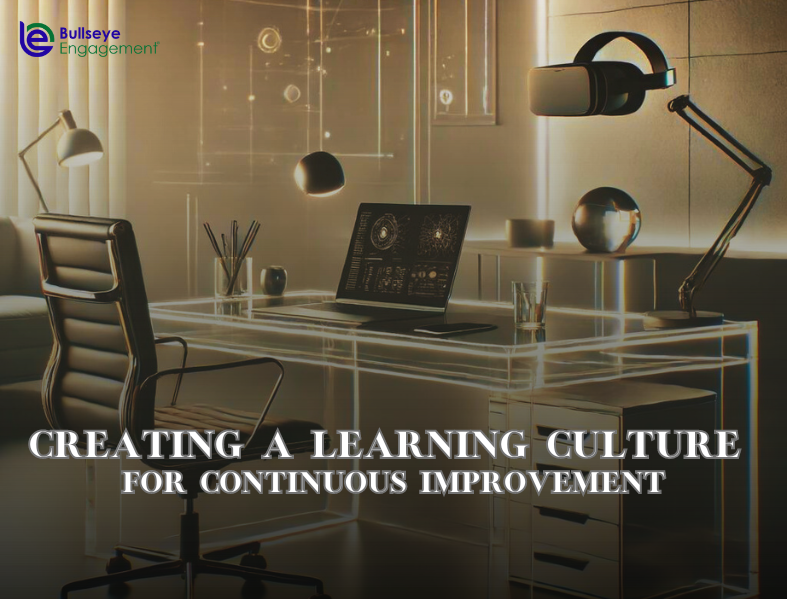Succession Planning is an important part of organizational structure, which ensures a seamless handover of leadership and supports corporate growth. Companies have seen a shift in recent years in succession planning trends and strategies. In this blog, we will explore the developments in succession planning in recent years.
Table of Content
- Why Succession Planning Software is Essential for Business Success?
- Challenges in Traditional Succession Planning Methods
- Understanding Succession Planning Software
- Types of Succession Planning Software Available
- Steps for Implementing Succession Planning Software
- Future Trends and Innovations in Succession Planning Software
- Impact of AI and Data Analytics in Succession Planning
- Conclusion
Why Succession Planning Software is Essential for Business Success?
At first, the primary concern of corporations was to fill key positions and crucial roles as quickly as possible. Traditional succession planning approaches may struggle to address unforeseen events such as sudden departures of employees or unexpected vacancies. Companies need a fresh approach in this rapidly changing business scenario. The emphasis has shifted to build proficient teams with talented individuals. It also aims to ensure a seamless departure of key personnel and handover of responsibilities to prevent disruptions in operations. This evolved process ensures that the workforce is equipped to meet the challenges that will emerge in the future.
Challenges in Traditional Succession Planning Methods

1. Manual Processes and Their Limitations
Challenges in Traditional Succession Planning arise from manual, time-consuming processes prone to errors. Tasks such as identifying skilled workforce in the required teams and tracking their performance in a timely manner becomes difficult if done manually. Recognizing the shortcomings of this traditional approach, companies look for more effective planning tools and techniques.There is a shared awareness within the industry of the shortcomings of relying on this time-consuming and error-prone approach. This awareness has led businesses to search for effective tools and techniques for succession planning. The tools and softwares aim to reduce errors, speed up processes, and establish a simple and reliable tracking system. The quest for efficiency implies a shift towards adopting tools that not only save time and build reliability but also increase the overall reliability of the entire process.
2. Risks Associated with Ineffective Succession Planning
An ineffective succession plan creates a series of significant risks and challenges, including dysfunctional leadership, erosion of employee morale, and potential talent stagnation. These challenges can affect workplace productivity and negatively impact employee performance. Companies must aggressively manage these risks to insulate themselves from the negative consequences of unsuccessful succession planning.
3. The Need for a Modern Approach
Acknowledging the limitations of the traditional approaches of succession planning, there emerges an escalating demand for a contemporary paradigm—one that harnesses the power of technology that subducts the shortcomings of the conventional approach. This entails embracing innovative technologies to streamline and enhance the succession planning process. A modernized approach integrates sophisticated tools and software, to expedite tasks, minimize errors, and provide comprehensive insights. By navigating away from antiquated methodologies and steering towards a tech-infused trajectory, businesses aim to overcome the drawbacks of traditional systems.
Understanding Succession Planning Software
Succession Planning Software is an advanced system designed to automate and streamline the succession planning process within organizations. Its functionality extends from identifying potential leaders and assessing their skills to tracking performance and ensuring a steady pipeline of talent for key roles.
Key Features and Benefits
Succession planning software, with its rich array of features and benefits, stands as a cornerstone for organizations aspiring to cultivate a robust leadership pipeline and secure long-term success.
1. Talent Profiling: The software allows the detailed profiling of employees, analyzing their skills, competencies, and potential for leadership roles. It also provides a comprehensive overview of the talent pool, aiding in targeted development and succession decision-making. This software assesses the alignment of potential candidates with role profiles, ensuring a meticulous evaluation of their suitability.
2. Skills Assessment: It facilitates the evaluation of employees’ current skills and identifies areas for improvement or further development. Guides personalized training and development plans, ensuring alignment with organizational needs.
3. Performance Tracking: Monitors and evaluates the performance of employees over time, offering insights into their contributions and areas of excellence. Informs succession decisions based on actual performance data, promoting merit-based promotions.
4. Succession Planning Workflow: Establishes a systematic workflow for identifying, assessing, and developing potential successors for key roles. Ensures a structured and organized approach to succession planning, minimizing oversights and maximizing efficiency.
5. Employee Development Plans: Enables the creation of tailored development plans for employees, outlining the steps needed to prepare them for future leadership roles. Fosters continuous learning and growth, aligning individual aspirations with organizational needs.
6. Analytics and Reporting: Provides robust analytics and reporting tools to track the effectiveness of succession planning strategies. Offers data-driven insights for decision-makers, aiding in the refinement of succession planning initiatives.
7. Position Readiness Matrices: The software utilizes matrices to assess the readiness of potential applicants for specific positions.It offers a visual representation of employees’ preparedness, aiding in transparent and objective decision-making.
Types of Succession Planning Software Available
Different types of succession planning software cater to diverse organizational needs, ranging from small businesses to large enterprises. Understanding these variations is crucial for selecting the right fit.
Importance of Succession Planning Software in Business Success
A. Enhancing Organizational Stability and Continuity
Succession planning software contributes to organizational stability by ensuring a continuous flow of skilled leaders. This stability, in turn, instills confidence among employees and stakeholders.
B. Mitigating Risks and Identifying Talent Gaps
By proactively identifying potential leaders and addressing talent gaps, businesses can mitigate risks associated with leadership turnover and maintain a competitive edge.
C. Improving Employee Engagement and Retention
Employees are more likely to stay engaged and committed when they see opportunities for growth within the organization. Succession planning software fosters a culture of development, positively impacting employee retention.
Steps for Implementing Succession Planning Software
Implementing Succession Planning Software involves a strategic and systematic method to make certain its seamless integration and effectiveness inside a company. The following steps offer a comprehensive manual for the implementation system:
1. Assessing Organizational Needs
Understanding the specific needs of the organization is the first step. This involves evaluating current leadership, identifying critical roles, and forecasting future talent requirements.
2. Selecting the Right Software
Choosing the right succession planning software involves considering factors such as scalability, customization options, and integration capabilities with existing HR systems.
3. Training and Implementation Strategies
Proper training is crucial for the successful implementation of succession planning software. Employees at all levels should be familiar with the software’s functionalities and their roles in the process
4. Monitoring and Evaluation
Continuous monitoring and evaluation ensure that the succession planning software remains aligned with organizational goals. Regular assessments help refine strategies and address any emerging challenges.
Future Trends and Innovations in Succession Planning Software
Predictions and Emerging Technologies
The future of succession planning software may involve advancements such as predictive analytics, machine learning, and enhanced collaboration features, offering more sophisticated solutions.
Impact of AI and Data Analytics in Succession Planning
Artificial intelligence (AI) and data analytics are increasingly playing a role in succession planning. These cutting-edge technologies are more than just tools; They usher in an unparalleled moment in talent management strategies, representing a paradigm shift. AI, and cognitive capabilities, have the potential to analyze talent development challenges in unprecedented depth. It can analyze patterns, identify hidden competencies, and predict possible pathways for individual growth in an organizational setting. At the same time, data analytics forms the backbone, analyzing large amounts of data to extract meaningful patterns and features. The connection between AI and data analytics goes beyond traditional approaches, providing a comprehensive understanding of the determinants of leadership success. Facilitated by this technology, predictive analytics is a powerful tool for predicting the trajectories of potential leaders, enabling organizations to groom and position individuals for roles used in in a proper manner Moreover, the combination of AI and data analytics doesn’t just depend on predictions; It expands to provide robust data-driven decision support. Leaders and decision makers can take information about their options to capture real-time and verify the evidence-based research assessment, not just the methodology.
Conclusion
Succession planning software is not just a tool; it’s a strategic investment in the long-term success of a business. Embracing technology ensures agility, adaptability, and resilience in the face of dynamic business environments. As businesses navigate an ever-changing landscape, succession planning software stands as a beacon of stability, driving growth, and securing the future by nurturing and harnessing the full potential of internal talent.




